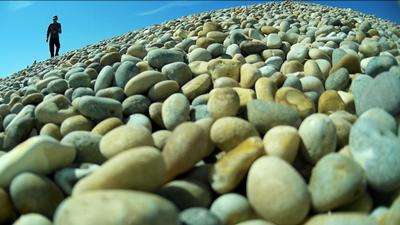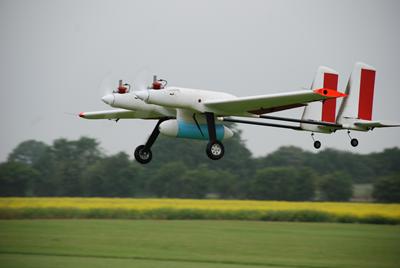BBC features Autonomous Systems research

In perfect weather, researchers from the University's Computational Engineering Design Group demonstrated their revolutionary printed aeroplane, launching it from HMS Mersey, off the coast of Dorset
Researchers from the University of Southampton demonstrated the capabilities of SULSA (Southampton University's Laser Sintered Aircraft) one of their 3D laser printed planes by flying it from a Royal Navy river-class offshore patrol vessel. It did a short flight before being brought in to land safely on Chesil Beach. Members of the Autonomous Systems USRG Jim Scanlan and Andy Keane were joined on HMS Mersea at Weymouth by senior navy personnel and members of the press and media who were eager to see this pioneering technology in action.

SULSA was the world's very first 3D printed aircraft - created at the University of Southampton in 2011 and the first of many. This plane, an upgraded version of that early version, has an extended endurance and carries a camera. Once the plane had orbited the second waypoint, professional remote systems pilot, Paul Heckles, was given the job of landing it safely on the pebbles, as you can see in the picture. Postgraduate student, Bob Entwhistle, who is studying full time on the EngD course, is part of the Southampton University UAV design team, along with Mario Ferraro, one of the designers of the original airframe and Andrew Lock. Bob filmed the flight from the ground control station. c
Read the BBC feature about the flight here.

The (UAV) design team
Professor Andy Keane, Professor Jim Scanlan, and Postgrads Mantas Brazinskas and Mehmet Erbil are also members of our Unmanned Aerial Vehicles (UAV) design team while Luke Raftery and Hirad Goudarzi have been part of the team for this summer. The team's work is interdisciplinary in its approach and a current collaboration with Electronics and Computer Science is looking into image processing and automatic recognition of ships at sea.
Project Triangle, the origin of this test flight, focuses on the development of low-cost reliable UAVs for civil marine operations. Designers can fine-tune a UAV for each specific application – whether it be crop spraying, surveillance or infrared photography – and then print a bespoke plane on demand. As per the quote from Admiral Zambellas, the Royal Navy can also see great benefits from using the technology.
Links to external websites
The University cannot accept responsibility for external websites.
We are after more and greater capability in this field, which delivers huge value for money. And, because it's new technology, with young people behind it, we're having fun doing it
The best thing about the day is that everything worked as programmed. We have been rehearsing in our flight test field in Swindon but there were still unknowns, like the effect of the tons of metal of the ship on the aircraft’s on-board magnetometer or the effect of the motion of the ship on the catapult launch - which was the most critical part of the mission. Luckily the weather was very good and the sea, wind and visibility conditions were perfect for the flight… the flight was mostly autonomous, but we had two safety pilots ready to take control in case there was any risk or deviation from the pre-programmed mission. Me, Andrew and Prof Keane embarked on HMS Mersey and ran through safety briefings and prepared the aircraft and catapult for the mission. Meanwhile the ground crew; Prof Scanlan, Bob and Paul Heckles were preparing the landing operation on Chesil Beach
Notes for editors
If you would like to join the Autonomous Systems USRG get in touch with us
